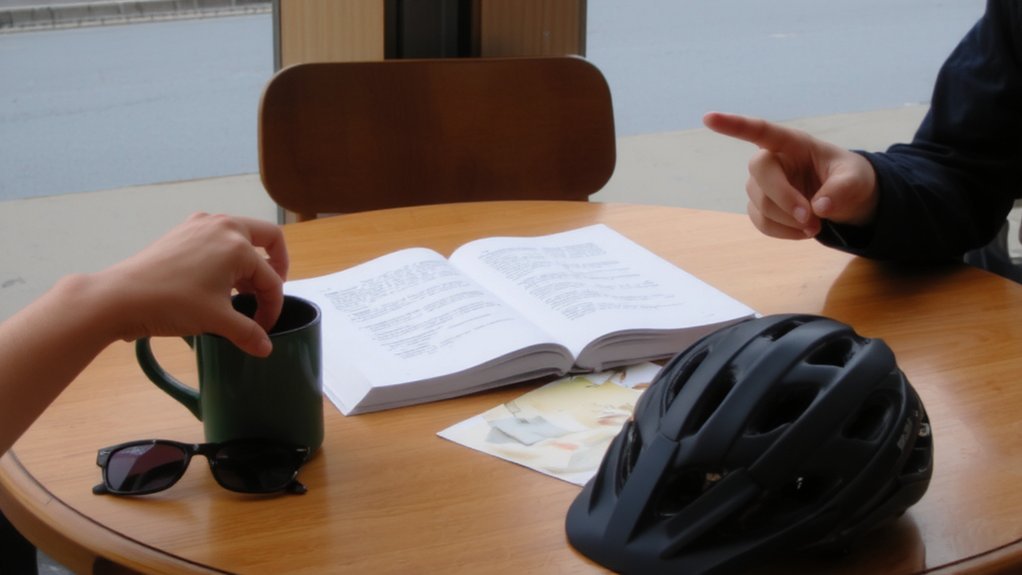You want conversations to feel natural and low-pressure. Start with a brief greeting or a specific observation about the situation. Ask an open-ended, easy question, match their energy, and listen—then follow up with a tiny personal detail to balance the exchange. If you get nervous, use a short script and breathe. Keep going; practical phrasing and step-by-step moves will make this simple.
Why Starting a Conversation Matters

Why start a conversation? You open possibilities: you learn perspectives, spot opportunities, and show interest.
Conversations help you build rapport quickly, reduce assumptions, and solve problems before they grow.
When you reach out, you practice social skills, gain confidence, and expand your network—sometimes a brief chat leads to collaboration or support.
You also create empathy: listening reveals needs and strengthens trust. Avoiding talk keeps you isolated and closes doors; initiating keeps options open.
Starting conversations helps you clarify ideas, test reactions, and gather feedback, so your decisions get sharper.
In short, initiating contact isn’t just small talk; it’s a tool for growth, connection, and practical progress in work and life. You’ll find unexpected allies, ideas, and moments that change your path and open doors.
Quick Openers That Work in Any Setting

How do you open a conversation that feels natural and gets a response?
Start with a simple greeting plus a short, specific prompt: “Hi, how’s your day?” or “Hey—what are you enjoying most today?”
Use open-ended but low-effort questions, like asking for a recommendation, opinion, or recent highlight.
Compliments that aren’t personal judgments work: “Nice bag—where’d you get it?”
Avoid yes/no traps and heavy topics.
If time is limited, try a situational offer: “Mind if I join?” or “Quick question for you.”
Keep tone friendly, concise, and curious.
Match energy—if they’re relaxed, be relaxed.
Practice a few go-to lines so you can start smoothly without overthinking.
Rotate lines so they feel genuine, not rehearsed, and adjust based on how the person responds over time.
Using Context and Observation to Spark Dialogue

Noticing small details lets you open conversations that feel natural and specific.
Look for something in the environment—an interesting book cover, a unique jacket, a coffee choice—and make a short, genuine remark about it.
Mentioning what’s happening now (long line, live music, shared wait) ties you to the moment and reduces awkwardness.
Use observational comments rather than intrusive personal assumptions.
Keep tone light, curious, and relevant to the setting.
Match the other person’s energy and respect boundaries; if they don’t engage, smile and move on.
You can combine observation with a brief personal note about why it caught your eye to make your comment feel human.
Practice noticing more, and opening will become easier and more authentic.
You’ll get better with simple, steady practice regularly.
Questions That Lead to Deeper Connection

After making an observational remark that opens the door, steer toward questions that invite more than small talk: ask about meaning, memory, or feeling behind something they mentioned instead of facts you could Google.
Ask open-ended prompts like “What was that experience like for you?” or “How did you come to care about that?” You’ll learn stories, values, and the emotions that drive choices.
Use follow-ups that show attention—“What stayed with you?” or “Why does that matter to you?”—and pause to let them answer.
Share a brief personal detail to balance the exchange so it feels mutual, not interrogative. Respect cues if they brush past a topic, and gently shift to something lighter while keeping curiosity genuine. That openness builds trust over time.
Texting Starters and Follow-Up Strategies

Where do you start a text so it feels natural, not forced? Begin with context: mention where you met, a shared moment, or something relevant to their interests.
Use a simple opener—observation, light compliment, or short question—that invites response. Match their tone and timing; don’t overwhelm with long messages.
For follow-ups, wait a reasonable interval, then add value: share a link, a quick related thought, or a specific question that narrows choices. Reference earlier conversation to show you listened, and suggest a casual next step if appropriate.
Avoid one-word replies; instead, keep messages concise and clear. If they don’t respond, give space and try a fresh, low-pressure topic later. You’ll come across as attentive and considerate when you balance curiosity with respect for boundaries.
Overcoming Nervousness and Keeping Momentum
When you feel nervous about starting or continuing a conversation, focus on small, controllable steps: breathe, ask a simple question, or make a brief observation that shifts attention from your anxiety to the interaction. Remind yourself that silence is okay; a pause gives you time to think and shows thoughtfulness.
Use open-ended prompts to keep momentum—ask about their day, interests, or opinion. Mirror tone and pace to build rapport, and nod or give short affirmations to signal you’re engaged.
If you stumble, acknowledge it lightly and redirect: “I lost my train of thought—what were you saying about…?” Practice with low-stakes chats to build confidence.
Over time, nervousness will lessen and conversations will flow more naturally. You’ll find it much easier the more you try.
Conclusion
You’ve got this: start with a simple, genuine opener, notice something specific, and ask a low-effort question like “How’s your day?” Match their energy, listen actively, follow up with curious, brief prompts, and share a tiny personal detail to keep it reciprocal. Use context to guide deeper questions, text thoughtfully, and manage nerves with small steps. If they seem uninterested, smile, exit gracefully, and try again elsewhere. You’ll learn and improve every time, for sure.